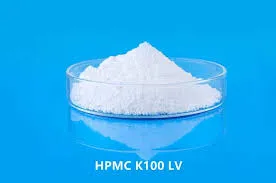
Dec . 12, 2024 11:28 Back to list
celulosa hpmc
Understanding Cellulose and Hydroxypropyl Methylcellulose (HPMC) A Deep Dive
Cellulose is a naturally occurring polysaccharide composed of glucose units linked together by β-1,4-glycosidic bonds. It forms the primary structural component of the cell wall in green plants, making it the most abundant organic polymer on Earth. Its unique structure gives cellulose its remarkable properties, including mechanical strength and rigidity, making it vital for plant growth and stability.
In various industries, cellulose and its derivatives have gained significant attention due to their versatile applications. Hydroxypropyl methylcellulose (HPMC) is one such derivative that has gained prominence, particularly in pharmaceuticals, food, construction, and cosmetics. HPMC is synthesized from cellulose through a chemical modification process that introduces hydroxypropyl and methyl groups into the cellulose structure. This transformation enhances the solubility, thickening, and film-forming properties of the original polymer.
Properties and Benefits of HPMC
One of the primary characteristics of HPMC is its excellent water solubility. Unlike its parent cellulose, which is insoluble in water, HPMC can dissolve readily in cold water, forming a clear viscous solution. This property makes it an ideal candidate for various applications, particularly in the pharmaceutical industry, where it is used as a binder, film-forming agent, and controlled-release agent in tablets and capsules.
Moreover, HPMC is non-toxic, biodegradable, and compatible with a wide range of substances, including electrolytes and other excipients. These features make HPMC a preferred choice in the formulation of food products, where it serves as a thickener, stabilizer, and emulsifier. In the construction industry, HPMC is utilized as an additive in cement and mortar, improving workability, adhesion, and water retention.
Applications Across Industries
celulosa hpmc

1. Pharmaceuticals In the pharmaceutical sector, HPMC is significant for its role in controlled drug release formulations. It helps regulate the release of active ingredients from tablets, ensuring consistent dosage over time. Furthermore, its film-forming capacity is beneficial in coating tablets, protecting them from environmental factors while enhancing their appearance.
2. Food Industry HPMC is recognized for its functionality in the food industry. It is widely used in low-fat and gluten-free products to improve texture and mouthfeel. Its ability to retain moisture also helps prolong the shelf life of various food items, making it an indispensable ingredient in many processed foods.
3. Cosmetics In the cosmetics industry, HPMC serves as a thickener and stabilizer in lotions, creams, and gels. Its ability to form films enhances the texture of cosmetic products, while also providing protective barriers to the skin.
4. Construction The construction industry benefits greatly from HPMC’s properties. When added to cement mixes, HPMC improves adhesion, water retention, and workability. This results in better performance of construction materials, leading to more durable structures.
Conclusion
In summary, cellulose and hydroxypropyl methylcellulose represent a fascinating intersection of nature and science. HPMC, with its diverse applications across multiple industries, showcases the potential of modified natural polymers. As we continue to search for sustainable and efficient materials, derivatives of cellulose like HPMC will undoubtedly play a crucial role in shaping future developments in pharmaceuticals, food, cosmetics, and construction.
Understanding the properties, benefits, and applications of cellulose and its derivatives is essential for researchers, manufacturers, and consumers alike. They not only contribute to innovation within industries but also align with environmentally friendly practices by utilizing natural resources effectively. As we embrace the potential of HPMC and cellulose, we move towards a future that balances industrial progress with sustainability.
-
Versatile Hpmc Uses in Different Industries
NewsJun.19,2025
-
Redispersible Powder's Role in Enhancing Durability of Construction Products
NewsJun.19,2025
-
Hydroxyethyl Cellulose Applications Driving Green Industrial Processes
NewsJun.19,2025
-
Exploring Different Redispersible Polymer Powder
NewsJun.19,2025
-
Choosing the Right Mortar Bonding Agent
NewsJun.19,2025
-
Applications and Significance of China Hpmc in Modern Industries
NewsJun.19,2025







